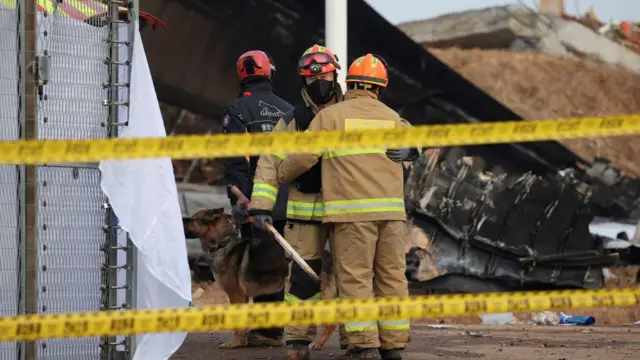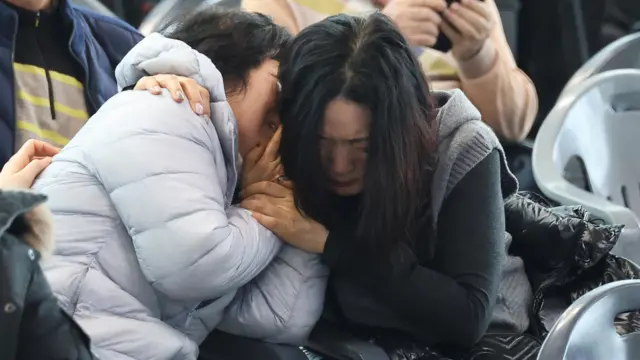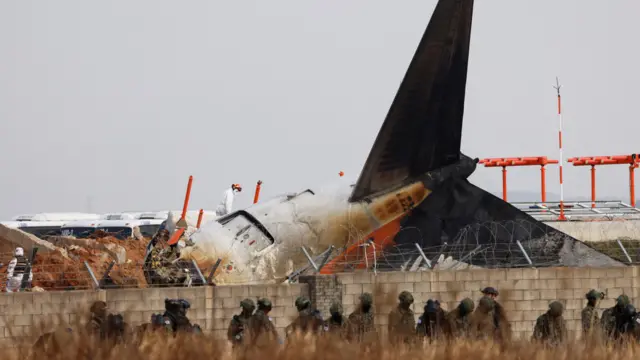Bereaved families call for more support as crash investigation continuespublished at 15:10 GMT 30 December 2024
 Adam Goldsmith
Adam Goldsmith
Live reporter
 Image source, Reuters
Image source, ReutersSince the Jeju Air plane crashed at Muan International Airport on Sunday, hundreds of the victims' family members have camped at the airport.
Bereaved families are waiting on the release of their loved ones' bodies, and have expressed frustration at a lack of timely updates from Jeju Air and government officials.
All 175 passengers and four members of the crew were killed in the crash, two flight staff survived and remain in hospital.
A period of seven days’ mourning has been announced by the country’s acting president Choi Sang-mok, as flowers have been laid at the scene.
Investigators are looking into the plane’s black box recordings but decoding them may be delayed due to damage, as the search for the cause of the crash continues.
In addition, a "comprehensive inspection" of all Boeing 737-800 aircraft is underway, and a team from the US is set to join South Korea’s aviation authority in its investigation.
We’re now closing our live coverage of this story, but the BBC has more on the victims’ families’ anxious wait after the deadliest aviation disaster on South Korea soil.

















